

Continued from page 3 on Venice
Our exploration of the building included the separate prison building. The path to the prison was over the Bridge of Sighs, so called because prisoners would sigh as they glimpsed the canal and buildings through the windows.

This is what the Bridge of Sighs looks like from the outside.
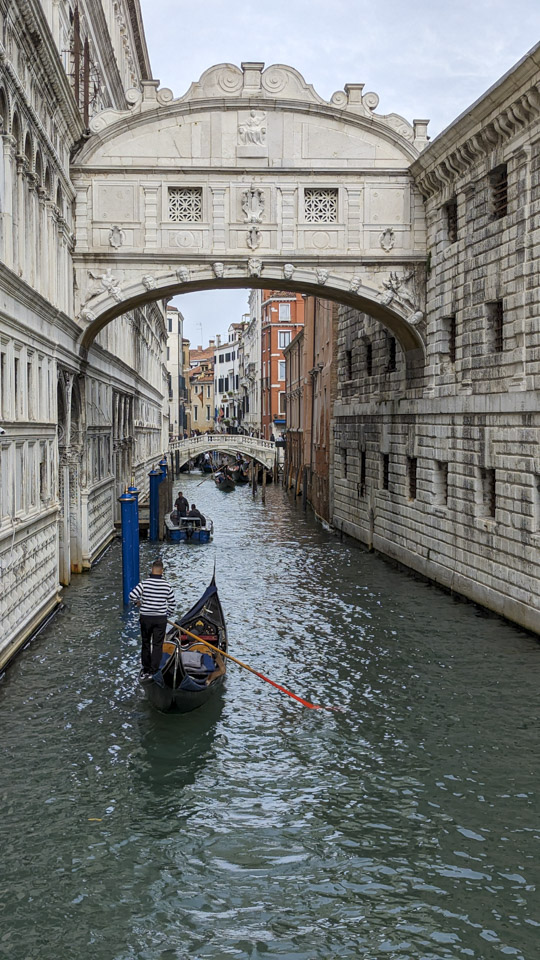
The prison was originally directly in the Doge's palace. In the mid-16th century a new building was built. The intention was to improve the conditions for the prisoners. The cells were larger, they were wood-lined to add warmth, and they were supposed to all have windows. That last bit did not actually happen, since some have passageways on all sides instead. But overall, conditions for prisoners improved with this new building. There was a courtyard for access to fresh air. The wood that lined the cells is no longer there.
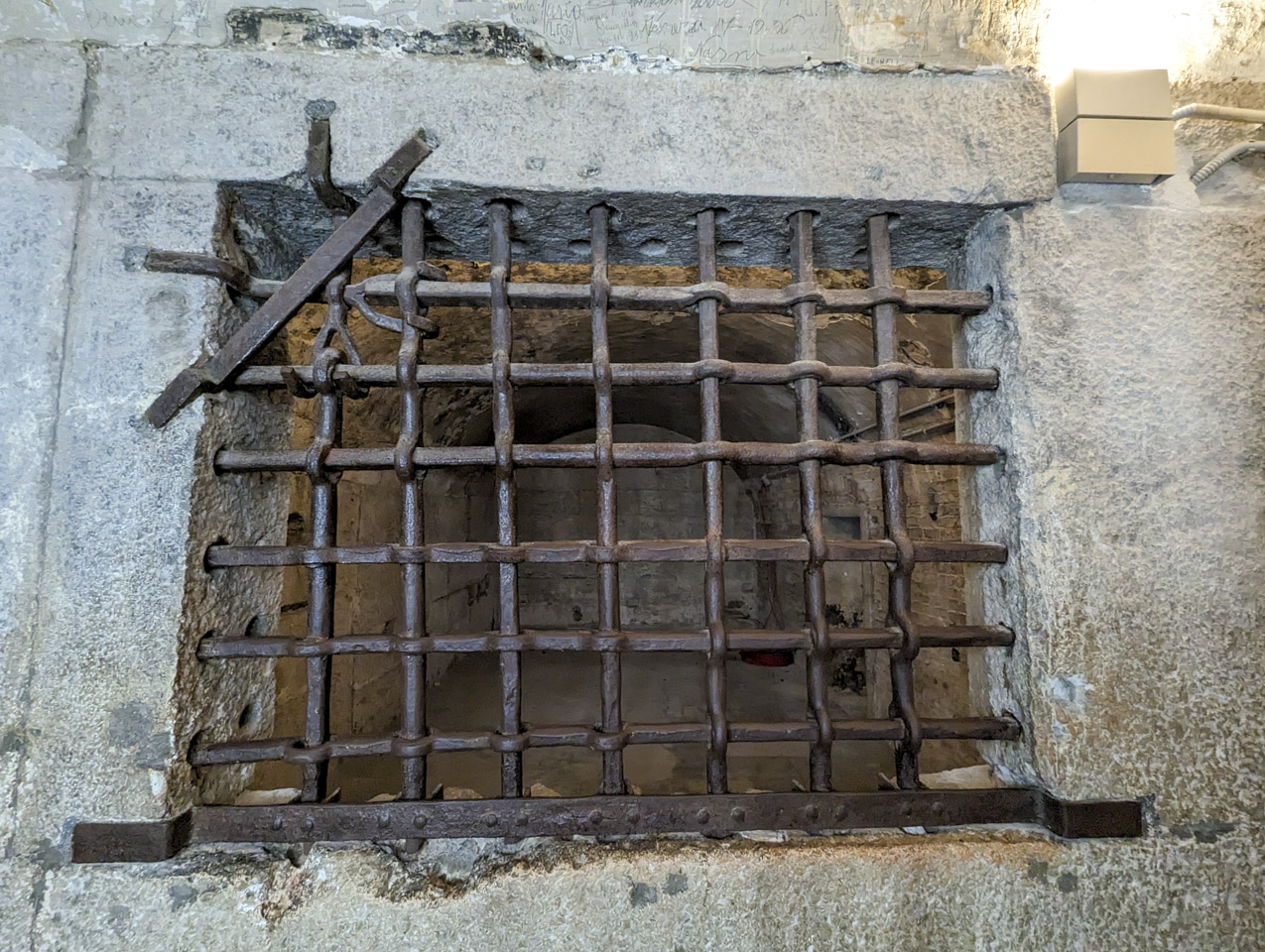

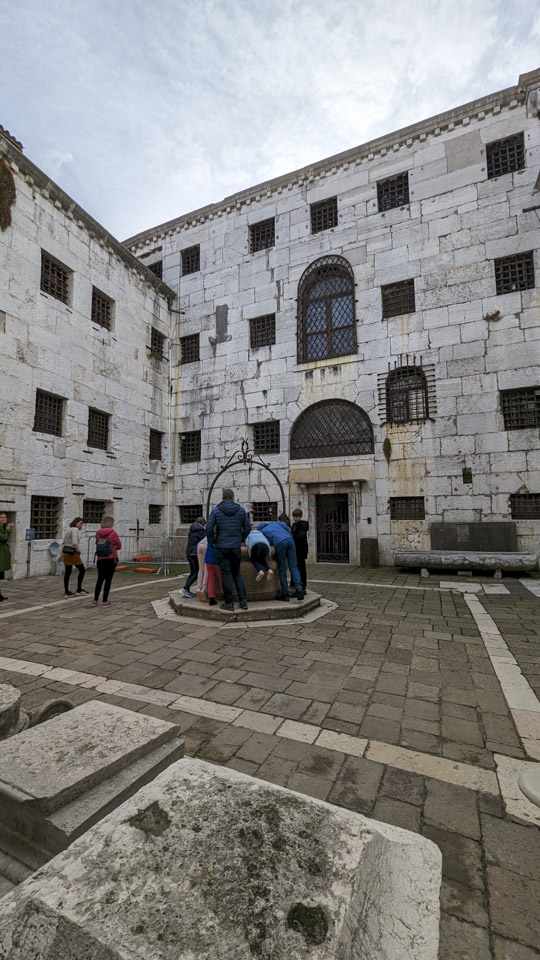
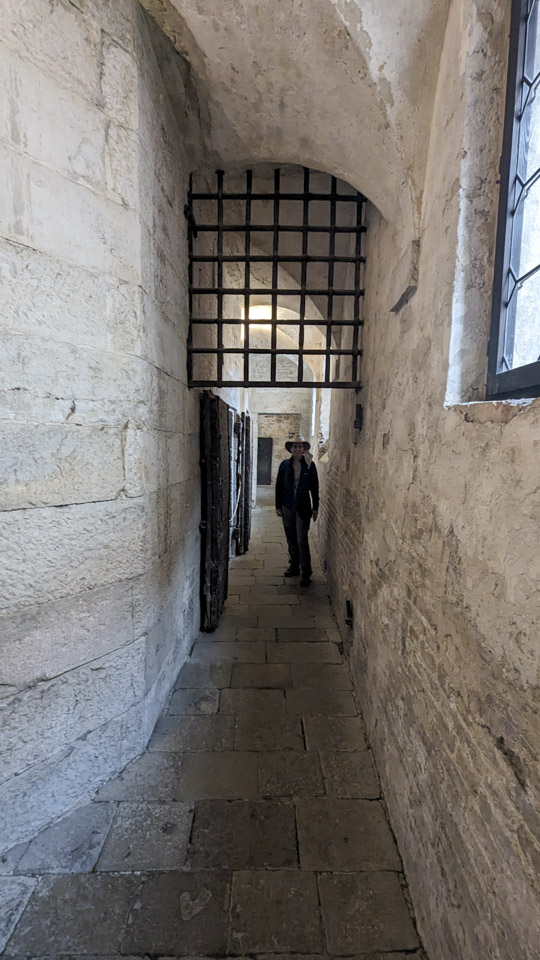
Much of this information about the palace was found on The Museum's official site. That site also has links to many photographs from within the building.
After touring Doge's Palace, we met Doni at a beautiful spot hiding in the open. Just around the corner from the piazzetta is a lovely green park with spots to sit and relax. There were not too many people there, despite the crowds in the piazza and along the waterfront.
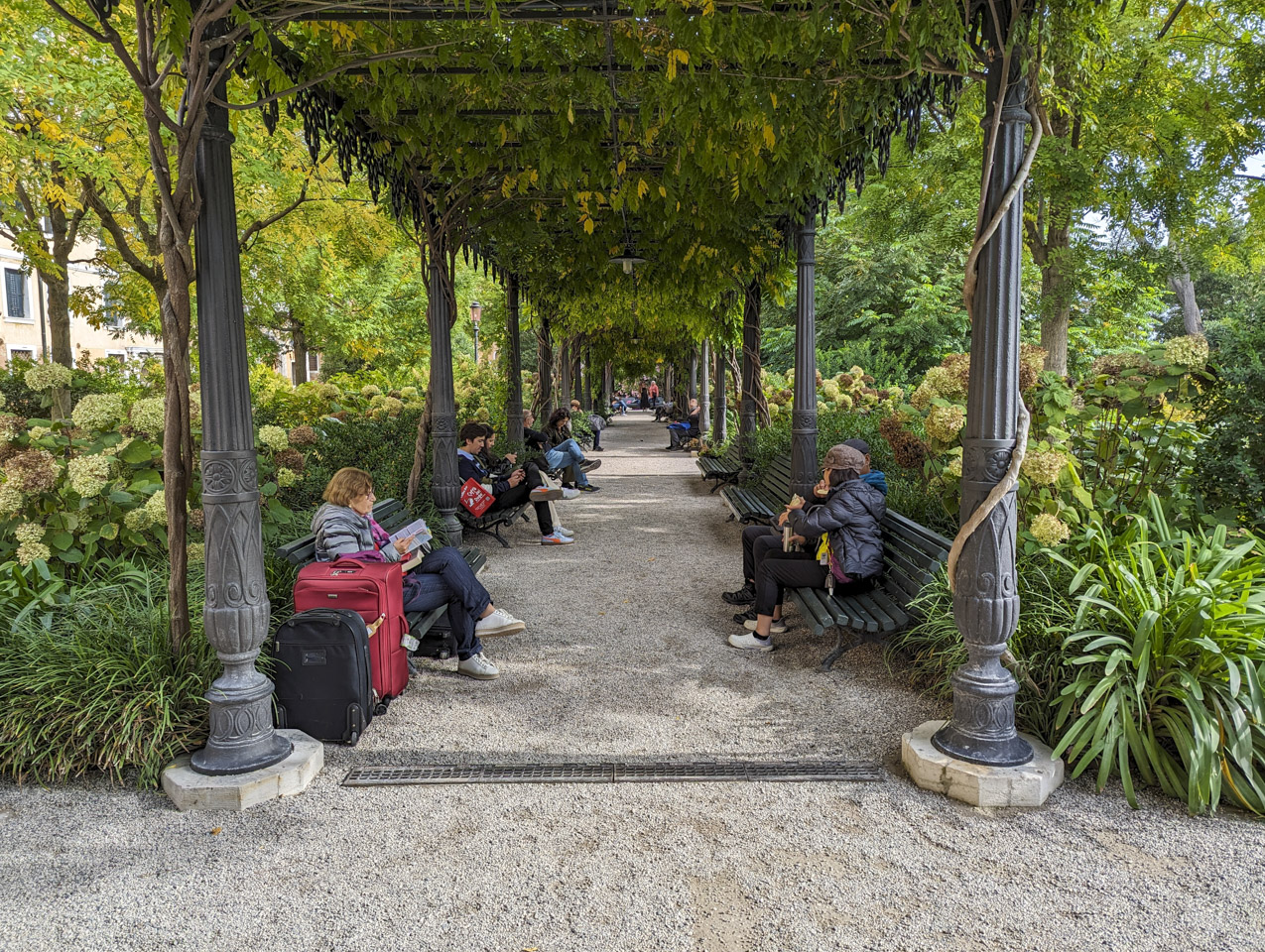
The main Piazza San Marco is very large. Above the Basilica end towers St Mark's Campanile, or bell tower. It is easily the tallest structure in Venice. The original construction started in the 900s, but construction was slow and the actual belfry was not added until around 1160. While the purpose of the tower was originally to be a watch tower to look for any attackers, the bells were used to mark the rhythms of daily life such as prisoners or government assemblies. The tower, particularly the wooden belfry, was damaged and repaired many times. In fact, this tower is actually new, only completed in 1912. This is because the previous tower totally collapsed in 1902. Some (including Francesco) feel that it should not have been rebuilt since the piazza is more attractive without it, but obviously more people felt that it was worth rebuilding.
The tower has another historical significance. In 1609 Galileo Galilei demonstrated his telescope to various Venetian nobles from the belfry. This new tool could be used as part of the watch function of the tower, providing a substantially better view of incoming vessels. In return for his invention he was given a lifetime appointment in Padua (then part of the Republic of Venice) and had his salary doubled (source: Wikipedia). Here are Paul & Anne with the bell tower behind them. And then there is a picture of Doni and Francesco with the east end of the piazza behind them.
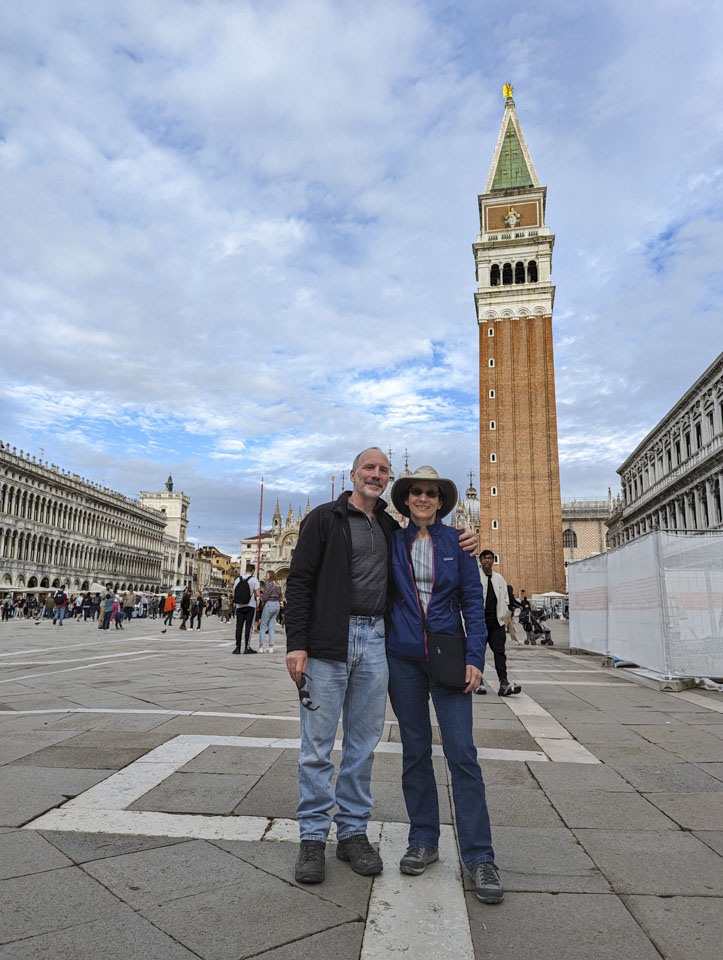
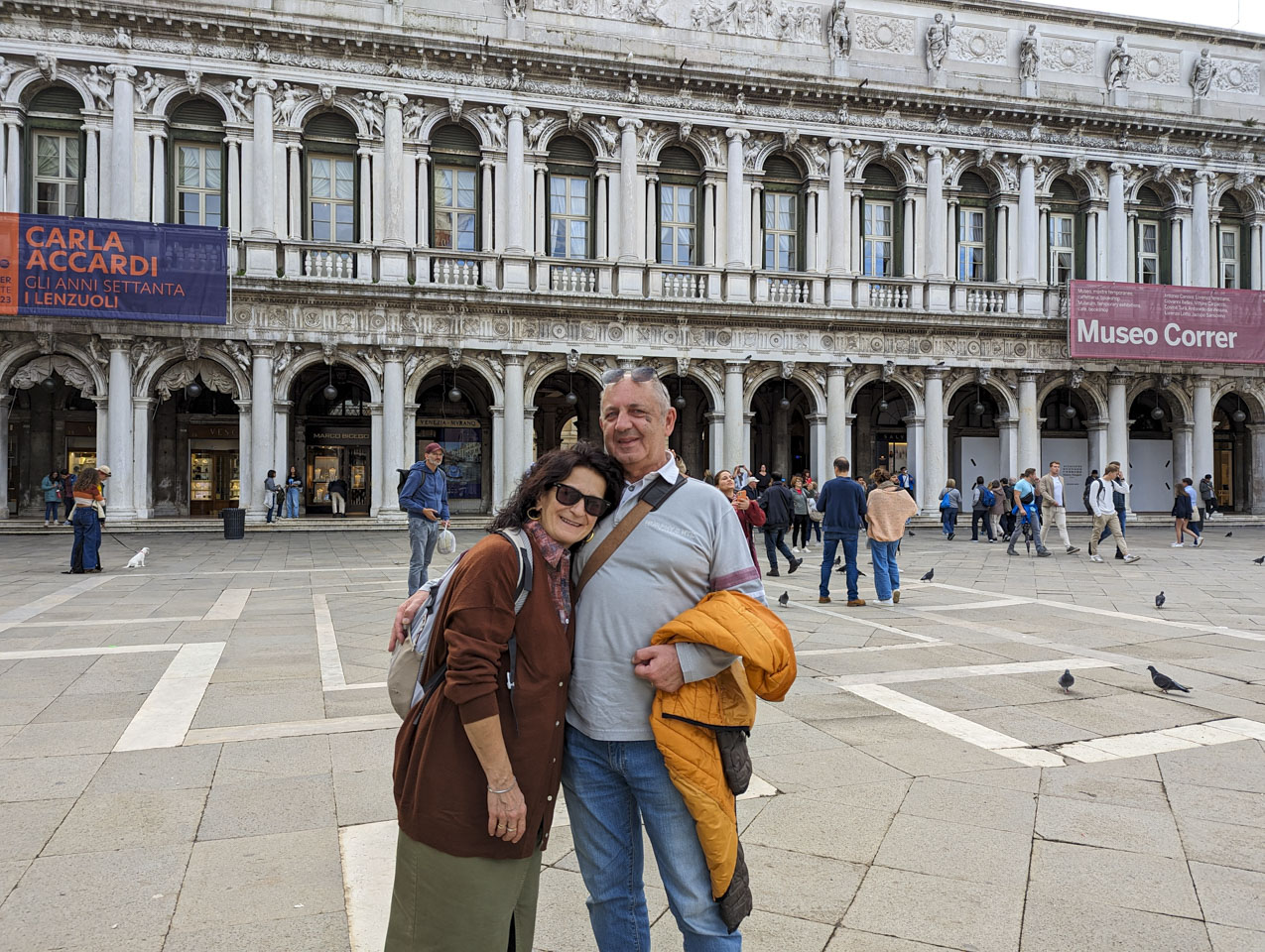
The sign on the right of the above picture says Museo Correr. The entrance to the Correr Museum is on this east end of the piazza. The two of us did a bit of a tour of the museum. (Francesco and Doni both passed on that.) Teodoro Correr was born in 1750 and was a passionate collector. He lived at an opportune time because with the political changes (end of the Republic of Venice, the start of foreign rule including by Napolean) many others were selling of parts of their collections or entire collections. He was able to fill his large family home with many objects. In his will, he stipulated that this huge collection would be given to Venice on the condition that it be a public museum with the name Correr Collection, and he even had some funds to help pay for caretakers. Since then the collection has grown even more and includes an even wider variety of items. We saw many pieces of art from various periods, including some very current works.

There was a library room with a really large globe.
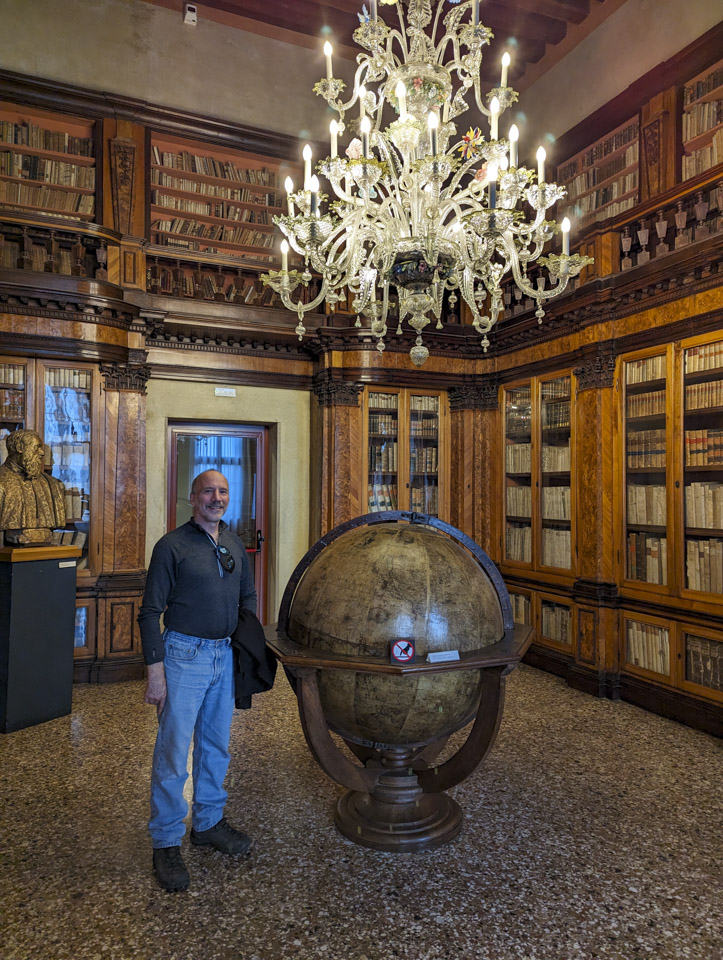
Amoung the statues were some really big toes.

There were 2 items in the museum that we felt were particularly interesting. One was these wood printing plates. They had to be carved in extreme detail as a mirror image of what was desired for the print. The print itself has a 3D look, even though it is flat. Notice in this next photo the words in the print, and the mirror image of the words on the plate. These pictures give you a view of both, of the entire print, and of some detail from the plates.

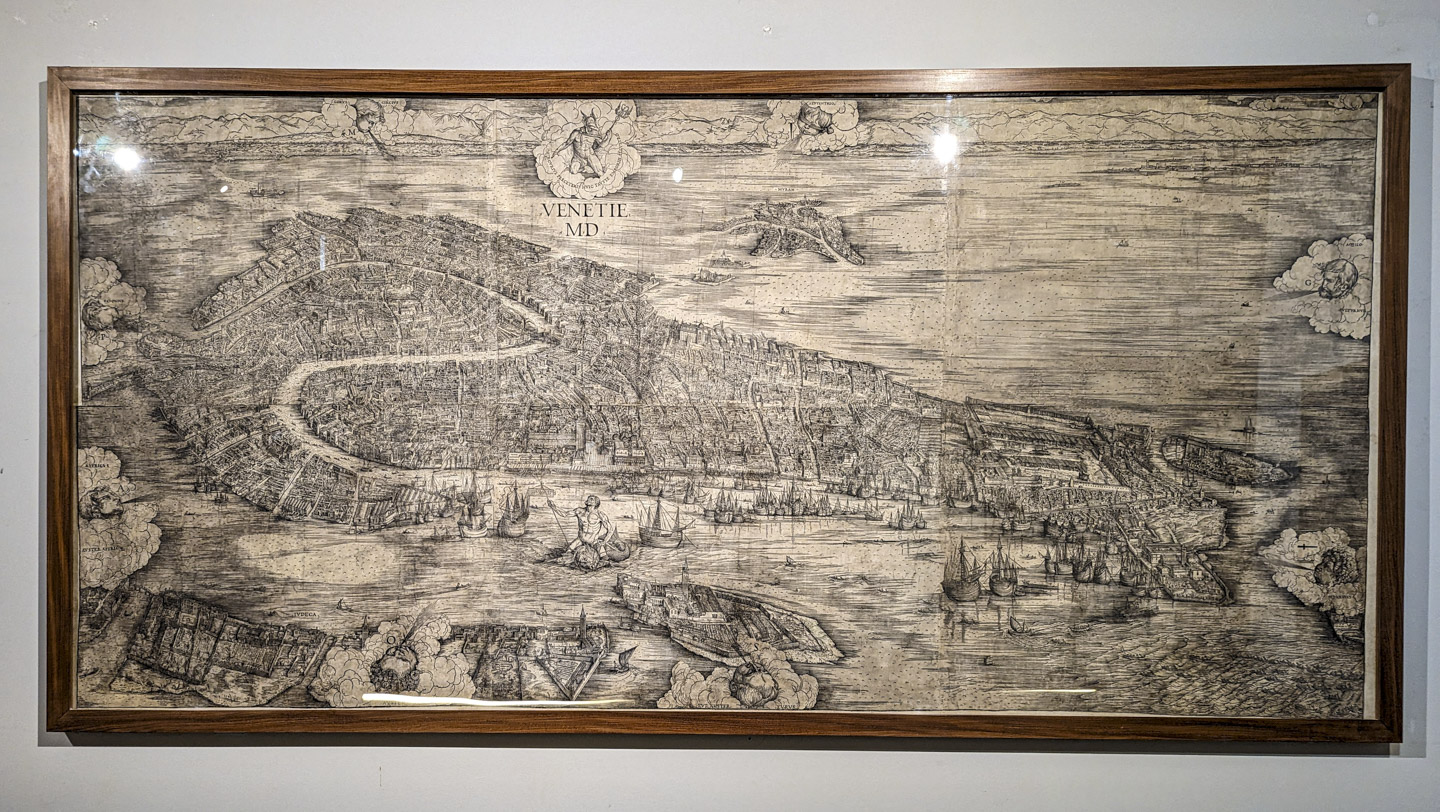
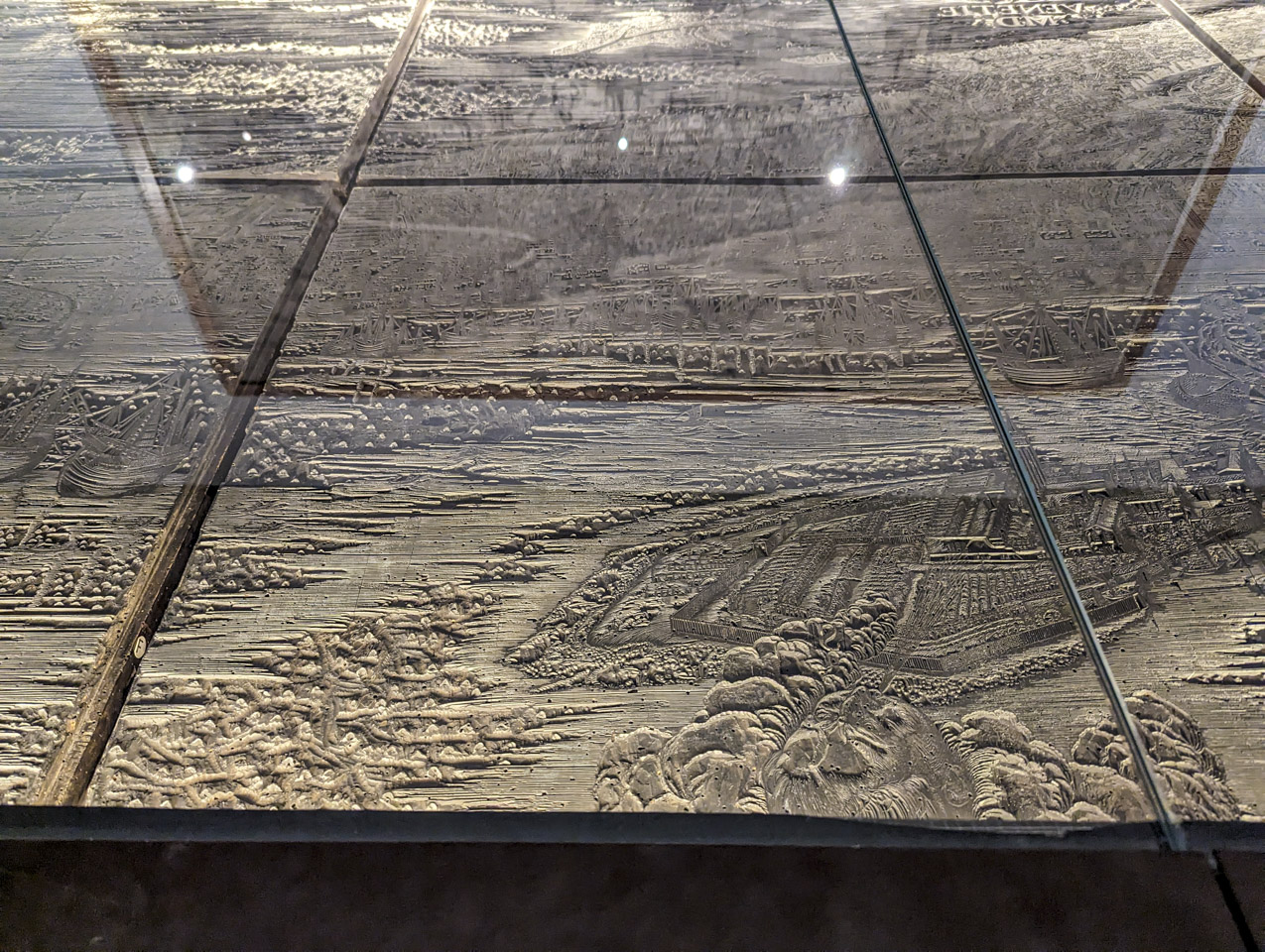
The other item is the will of Marco Polo. Not the swimming pool game, but the Venetian adventurer. (This is actually a copy of the will; the original is tucked away somewhere in the library that is in this same building.) Marco Polo died in 1324. The accounts of his travels were very popular and also influenced cartography and other journeys to China.

The museum provides some nice views of the plaza. From the second floor of the building with the entrance, there is a clear view right down the piazza.
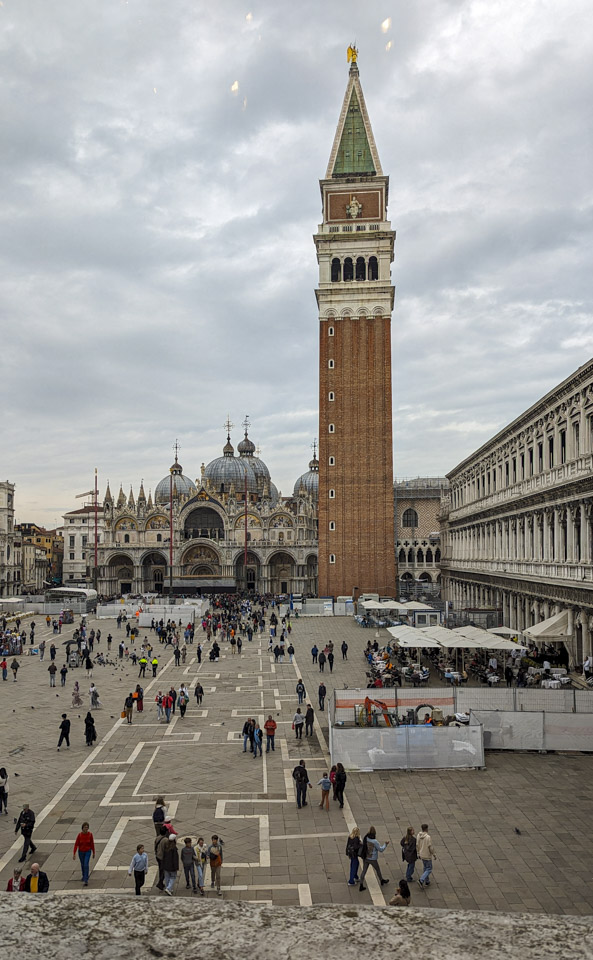
And from the side building is a view of St Mark's Clocktower. This tower was designed to be seen by visitors coming in from the water and impress them with Venice's wealth and power. The figures at the top move at the waist and strike the bell. The tower is decorated with the winged lion. The space in front of the lion once had a figure representing the Doge, but Napoleon's forces removed that. Below that is a statue of the Virgin and Child. The panels next to the statue show the time; this particular photograph was taken at 4 PM. A detail to notice is the roof adjacent to the tower, which has a patio on it. Many of the buildings in Venice utilize rooftops to provide some outdoor living space.
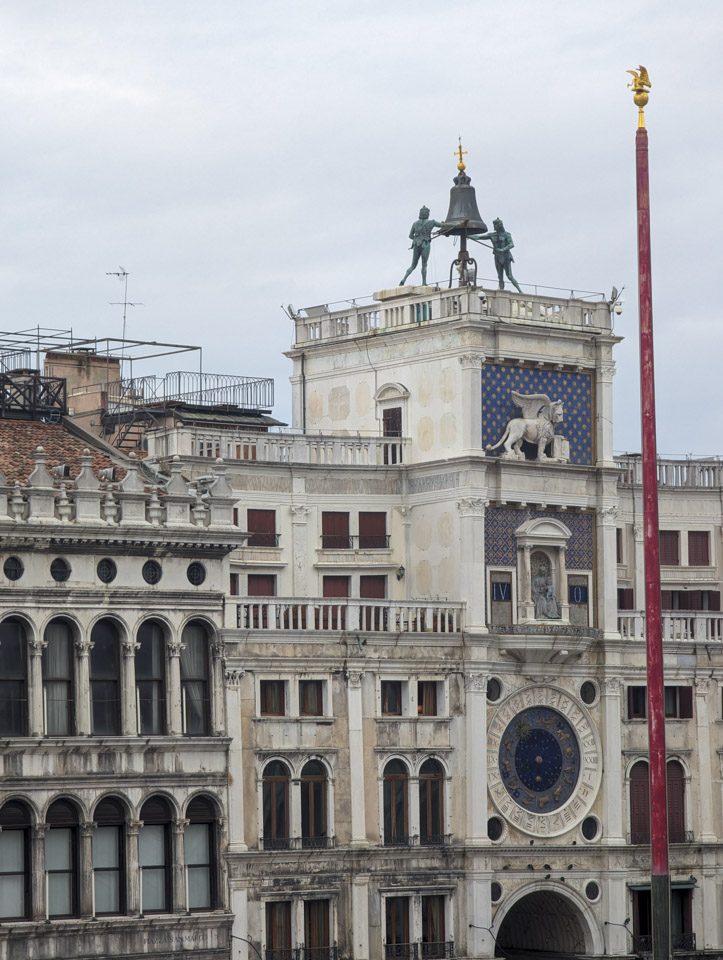
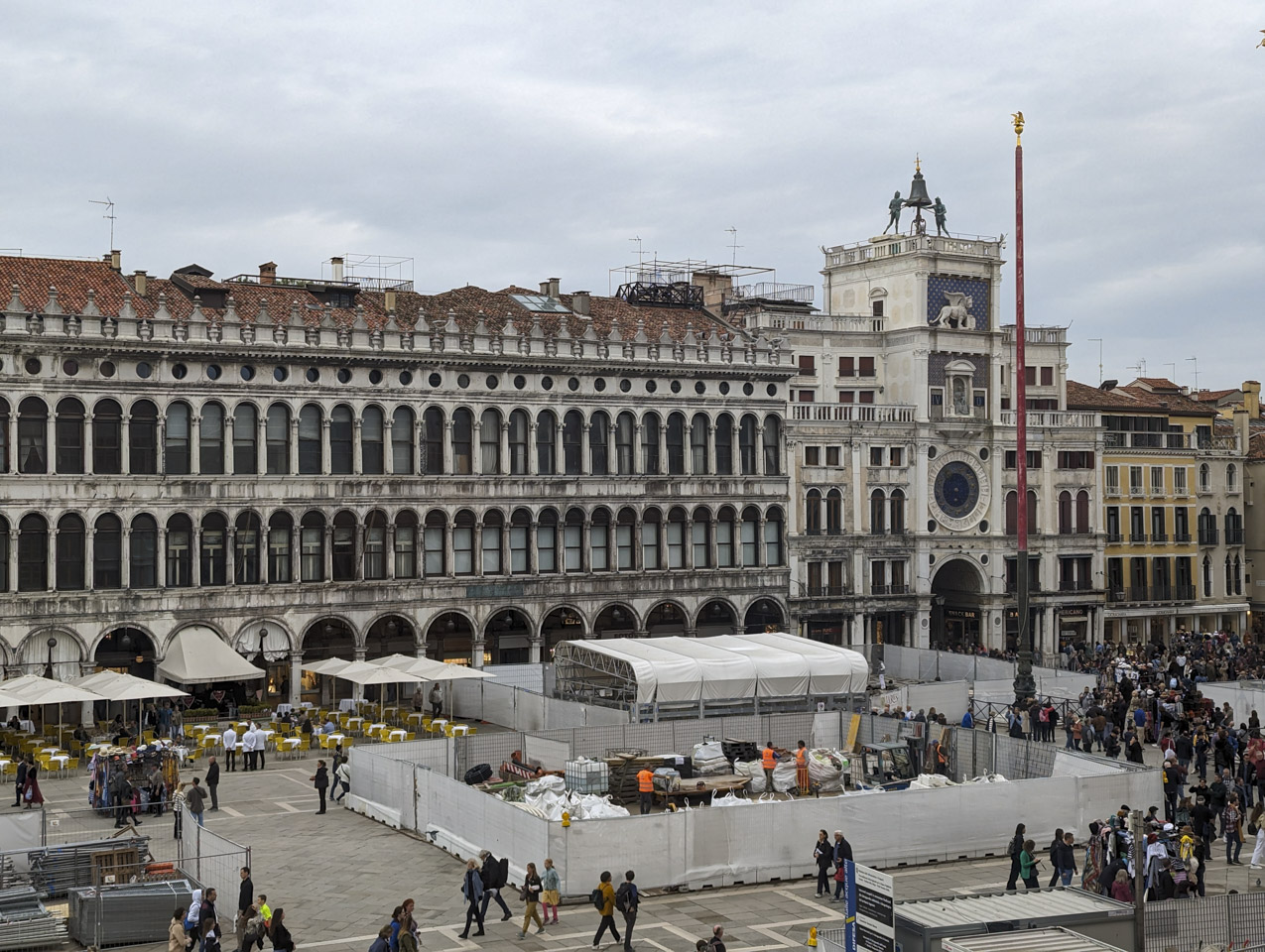
In that last picture with a wider view of the clock tower, there are many other details to notice. There is another vending cart with hats. There are maitre d's in white jackets waiting to seat customers. And there are a number of spots with white fencing around them. These are spots where workers are laboring to maintain or fix the plaza. Some of the work involved pulling up the individual stone slabs, marking exactly where they come from, and hand-repairing them for preservation.
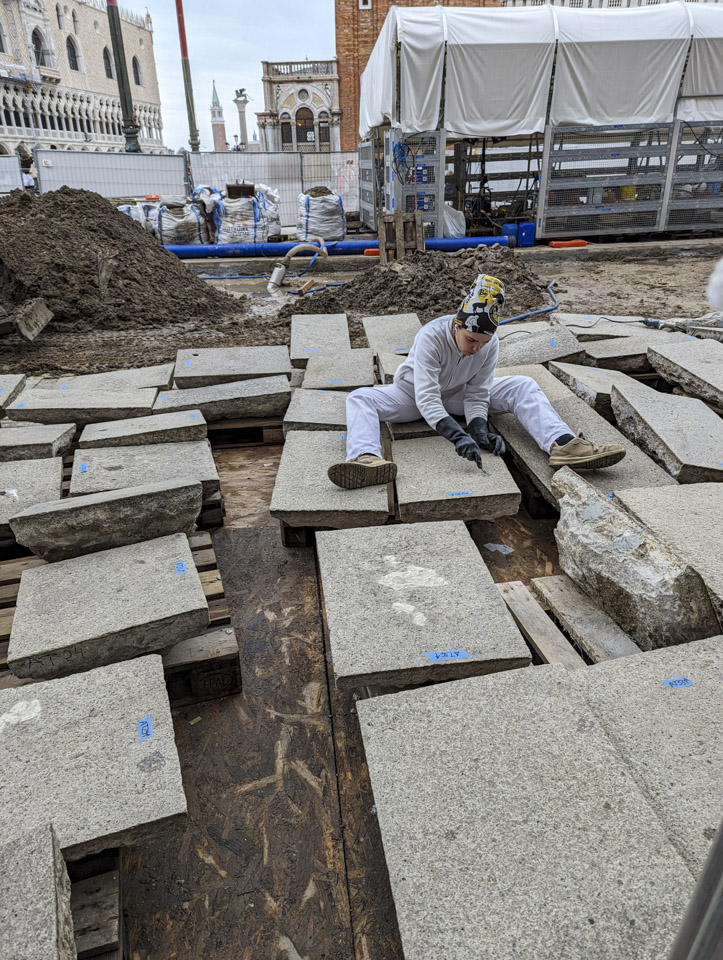
While feeding pigeons in St Mark's Square is a famous image, gulls are also in the area and are much more aggressive. They even had signs warning against feeding gulls.
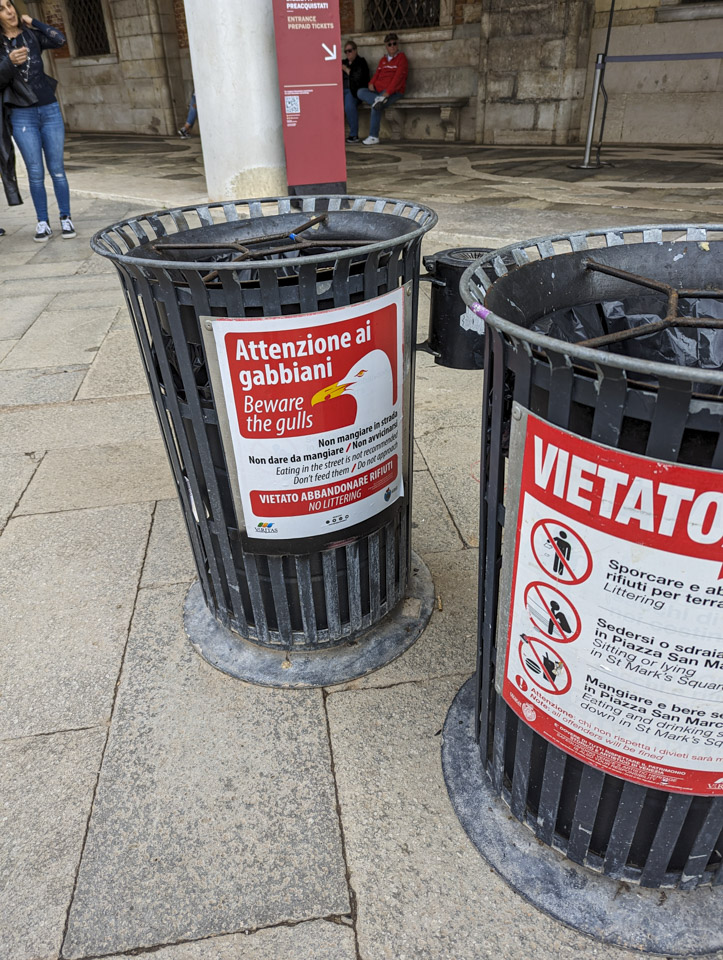
In 1997 feeding even pigeons was banned anywhere except Piazza San Marco. In 2008, even feeding them there was banned due to many reasons. We did not know this at the time, and Anne decided to do a classic tourist activity: she bought some feed from a man and feed the pigeons. Not sure it was worth it; the man charged €5 for a tiny handful of seed! Okay, it was probably worth it to do once.

We had a wonderful visit to Venice, and are very grateful to Francesco and Doni for showing us around. If you visit Venice, be prepared for some walking. In the 2 days we were there, we walked almost 22 miles! (Or should we say we walked over 35 kilometers; this is Italy after all.)
If you want more about Venice, you can check out this site that we bumped into while writing this trip report up, Images of Venice, that has many fabulous photographs of Venice, plus some information about the city.
Updated August 2024